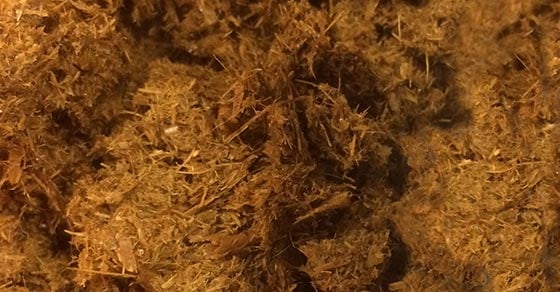As traditional bedding options become increasingly unreliable, more farms are looking to Recycled Manure Solids (RMS) or Dried Manure Solids (DMS) as an alternative bedding material for livestock.
Ongoing research and the number of farms successfully utilizing this approach have proven that both recycled and dried manure solids can offer an effective solution with many benefits.
Some farms are even finding that the quality of their milk can be improved through the use of an industrial drying system, such as those FEECO provides for the production of dried manure solids.
Why Manure Solids?
Several factors are contributing to the increased desire to use manure solids as an alternative source of bedding. Most notably:
Traditional Bedding Options are Becoming Less Reliable
Traditional beddings such as sand, sawdust, straw, and woodchips are not only becoming increasingly costly and difficult to find, but they often fluctuate in price, creating an unpredictable bedding supply.
The Importance of Sustainability Continues to Increase
Further prompting this increased interest in manure solids is the push for improved sustainability of on-farm practices.
The use of recycled manure solids offers improved sustainability; utilizing recycled manure solids avoids the associated environmental costs by reducing transportation of manure off-site and bedding on-site, creating a closed loop system on farm.
Farm Sizes are Increasing
As farm sizes continue to increase to feed a growing global population, so too does the amount of manure these farms produce. With such significant amounts, efficient and cost-effective manure management often puts a strain on farms, leaving them with few options to deal with mounting quantities of manure.
Sand is Decreasing in Popularity
Sand has been a popular alternative to some bedding options, but as many are finding, it can be difficult to manage and is hard on equipment, causing many farms to look for yet another alternative.
In short, farms are struggling with available bedding options, and with excessive amounts of manure, turning it into a bedding is an increasingly attractive option.
New Research in Manure Solids Bedding
Opposition to using manure solids as bedding has largely been a concern of bacterial content. Up until recently, there was little research to alleviate these concerns. However, studies are now beginning to show the viability that manure solids hold as an alternate bedding source.
A 2008 study conducted by the Cornell Waste Management Institute assessed the use of dried manure solids as bedding, and found that there was no significant difference in the level of bacteria in dried manure solids when compared to other types of bedding after use.
An observational study conducted by the University of Minnesota studied 38 Mid Western farms utilizing recycled manure solids. The study found that among other key factors, the amount of moisture in bedding is a major contributing factor in bacterial growth, noting that bedding should be kept as dry as possible.
Both studies noted that as with any bedding, proper management is the key to success.
Benefits of Using Manure Solids as Bedding
The benefits of utilizing recycled or dried manure solids are two-fold for farms and the environment:
Reduced Costs
Due to its high moisture content, hauling and land-applying manure is extremely costly and is generally not feasible over long distances. Using the manure on-farm would eliminate these costs, as well as the need to purchase additional bedding, allowing farms to be self-sufficient in supplying their own bedding and handling their wastes more efficiently.
Additional Source of Revenue
In some cases, farms may produce more bedding than what they can use themselves, opening the door to an additional source of revenue through the sale of excess supply.
A Waste is Being Recycled
Bedding recovered from manure allows a “waste” that would otherwise have potential environmental impacts, to be reused in a beneficial way. From a long-term perspective, the practice of reusing manure solids for bedding offers a closed-loop, sustainable solution to livestock bedding.
Processing Recycled Manure Solids for Bedding
While the process can vary somewhat, in general, bedding recovery from manure is carried out as follows:
Manure is scraped or flushed from stalls. In some processes, the flushed material moves on to anaerobic digestion to reduce the bacteria content and odor of the material.
The slurry then goes through a solid/liquid separation process. This is most commonly done with a screw press, centrifuge, or slope screen that separates the coarse fibers from the liquid portion. The resulting material is a recycled manure solid that can be used as bedding. Some farms allow the material to further dry in a composting drum before use. While this produces a somewhat effective product, some farms are looking to reduce the bacterial content of the material even more.
This was the case with Matsche Dairy, a large-scale dairy farm located in Wisconsin. Matsche had switched to recycled manure solids, and while they were happy with the switch, they found that they were needing to add lime to the solids to reduce the bacteria to a satisfactory level.
FEECO worked with the dairy to test the feasibility of pasteurizing their material via an industrial drying process. After successful testing trials, we engineered and manufactured a custom rotary dryer that produces a dried manure solids product with reduced pathogen and bacteria content, ideal for use as a bedding.
Conclusion
While skepticism has long surrounded the use of recycled and dried manure solids as bedding for livestock, ongoing research and successful implementation with an increasing number of farms is proving these materials to be an effective bedding solution with many benefits.
FEECO can offer an on-farm drying solution to produce a premium dried manure solids bedding product. For more information, contact us today!



